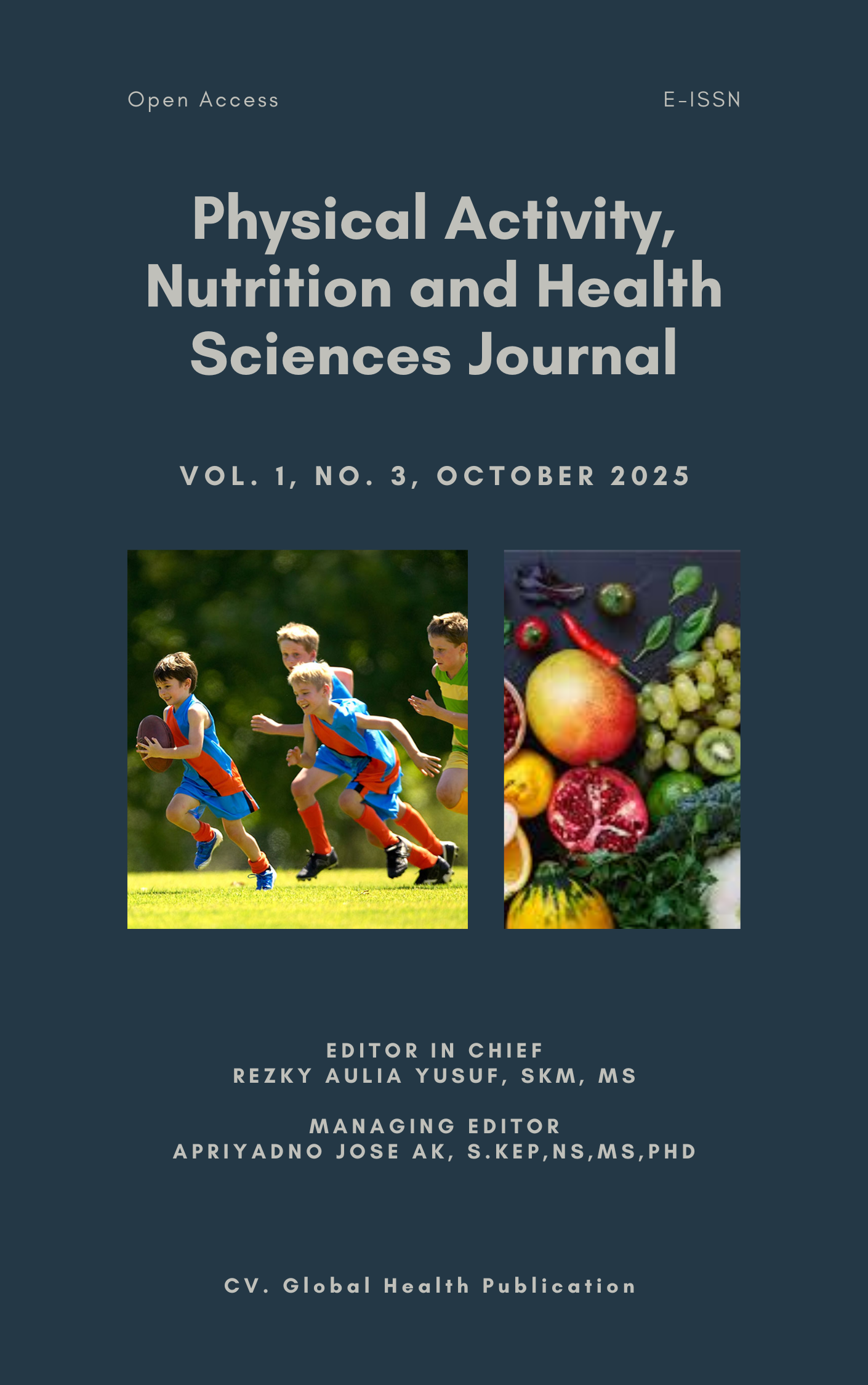Cardiovascular Risk Factors and Detection of Atrial Fibrillation in the General Population, Makassar, Indonesia: A cross-sectional analysis from a Car-free day
DOI:
https://doi.org/10.65280/panhsj.v1i1.18Abstract
Cardiovascular disease (CVD) remains the leading cause of death worldwide, with an increasing prevalence in Indonesia. Understanding cardiovascular risk factors associated with arrhythmias in the general population is crucial for effective prevention. This study aims to analyse the relationship between cardiovascular risk factors and the occurrence of atrial fibrillation among participants of Car-Free Day in Makassar, Indonesia. Methods: This cross-sectional study involved 113 respondents during the Car-Free Day event at Hasanuddin University on December 8, 2024. Data on demographics, cardiovascular risk factors, and clinical profiles, including blood pressure, heart rhythm (measured using mobile ECG_5.33.1.apk), and lipid profile, were collected. Results: Of 113 respondents, 46 met the inclusion criteria. Hypertension had the highest prevalence (23.9%), predominantly in individuals over 40 years old. Tachycardia was more common among younger participants (<40 years) and those with obesity. Conclusions: Age is a significant risk factor for hypertension and other cardiovascular disorders. The high prevalence of hypertension among older adults and tachycardia among younger individuals highlights the need for lifestyle modification and early detection strategies in Makassar.
References
[1] Di Cesare, M. et al. (2024) ‘The Heart of the World’, Global Heart, 19(1). Available at: https://doi.org/10.5334/gh.1288.
[2] Muharram, F.R. et al. (2024) ‘The 30 Years of Shifting in The Indonesian Cardiovascular Burden—Analysis of The Global Burden of Disease Study’, Journal of Epidemiology and Global Health, 14(1), pp. 193–212. Available at: https://doi.org/10.1007/s44197-024-00187-8.
[3] Bays, H.E. et al. (2021) ‘Ten things to know about ten cardiovascular disease risk factors’, American Journal of Preventive Cardiology, 5(November 2020), p. 100149. Available at: https://doi.org/10.1016/j.ajpc.2021.100149.
[4] Srinivas, S. et al. (2024) ‘Neurological Consequences of Cardiac Arrhythmias: Relationship Between Stroke, Cognitive Decline, and Heart Rhythm Disorders’, Cureus, 16(3). Available at: https://doi.org/10.7759/cureus.57159.
[5] Ray, L., Geier, C. and Dewitt, K.M. (2023) ‘Pathophysiology and treatment of adults with arrhythmias in the emergency department, part 2: Ventricular and bradyarrhythmias’, American Journal of Health-System Pharmacy, 80(17), pp. 1123–1136. Available at: https://doi.org/10.1093/ajhp/zxad115.
[6] Alinaitwe, B. et al. (2024) ‘Prevalence of Risk Factors for Hypertension Among Faculty at an Urban University in Uganda’, Integrated Blood Pressure Control, 17(December 2023), pp. 1–11. Available at: https://doi.org/10.2147/IBPC.S440972.
[7] Khasanah, D.N. (2022) ‘the Risk Factors of Hypertension in Indonesia (Data Study of Indonesian Family Life Survey 5)’, Journal of Public Health Research and Community Health Development, 5(2), p. 80. Available at: https://doi.org/10.20473/jphrecode.v5i2.27923.
Downloads
Published
Issue
Section
License
Copyright (c) 2025 Physical Activity, Nutrition and Health Sciences Journal

This work is licensed under a Creative Commons Attribution-NonCommercial-ShareAlike 4.0 International License.
CC Attribution-NonCommercial-ShareAlike 4.0










